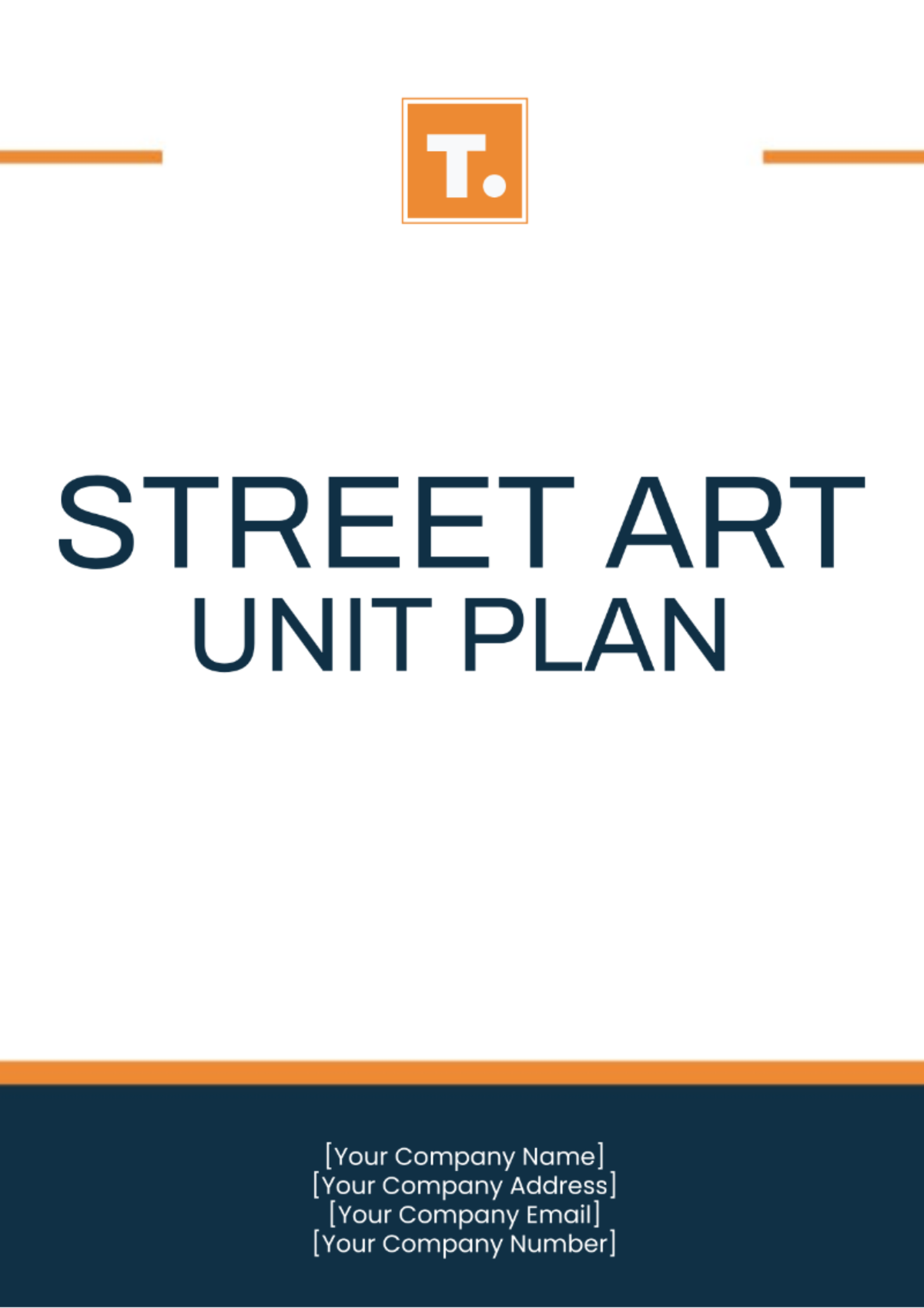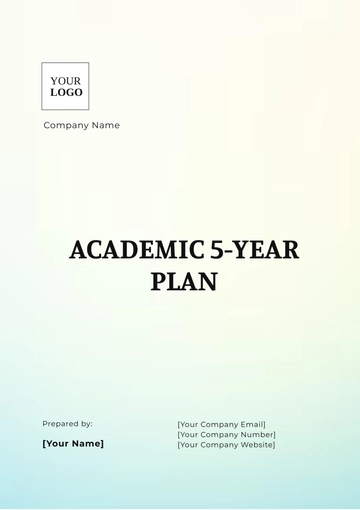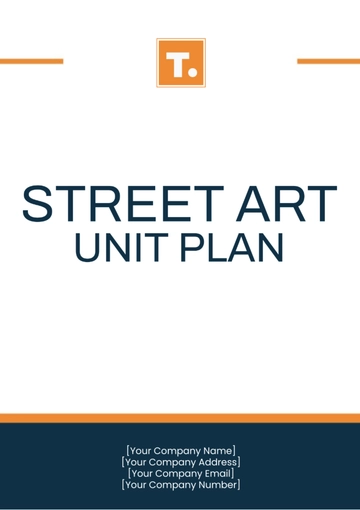Free Street Art Unit Plan

Prepared by: | [YOUR NAME] |
Subject: | Visual Art |
Topic: | Street Art |
Date: | [DATE] |
I. Unit Overview
This unit aims to engage students in an in-depth exploration of street art, focusing on its historical context, various techniques, and its cultural importance. Through a blend of theoretical knowledge and practical activities, students will develop a comprehensive understanding of street art and its impact on contemporary culture.
II. Learning Objectives
Understand the historical development of street art.
Identify and analyze different street art techniques.
Examine the cultural and social significance of street art.
Create original street art projects using learned techniques.
III. Standards Alignment
This unit aligns with the following visual arts standards:
Interpret artworks by analyzing contextual information and artistic techniques.
Create artwork that demonstrates an understanding of techniques and expressive qualities.
Investigate and discuss the role of art in historical and contemporary society.
IV. Instructional Strategies
Lectures and multimedia presentations on the history and significance of street art.
Hands-on workshops to practice various street art techniques.
Field trips to view and analyze local street art murals and other forms of street art.
Group discussions and critiques to foster peer learning and feedback.
V. Weekly Breakdown
Below is the detailed weekly plan for the unit.
Week 1: Introduction to Street Art
Lesson | Objectives | Activities | Materials Needed |
|---|---|---|---|
1.1 History of Street Art |
|
| Projector, Documentary video |
1.2 Key Street Artists |
|
| Computers, Internet access |
Week 2: Techniques in Street Art
Lesson | Objectives | Activities | Materials Needed |
|---|---|---|---|
2.1 Graffiti Techniques |
|
| Spray paint, Protective gear, Canvas/paper |
2.2 Stencil Art |
|
| Cardboard, Exacto knives, Spray paint |
Week 3: Cultural Significance of Street Art
Lesson | Objectives | Activities | Materials Needed |
|---|---|---|---|
3.1 Street Art in Contemporary Culture |
|
| Guest speaker, Audio equipment |
3.2 Community Project |
|
| Mural materials, Planning documents |
VI. Assessment Methods
Students will be assessed through a variety of methods to ensure a comprehensive evaluation of their understanding and skills:
Written assignments and research projects.
Oral presentations and class participation.
Practical projects and art creation.
Peer reviews and group critiques.
VII. Resources
A list of resources to support the unit:
Books and articles on the history and techniques of street art.
Documentary films and interviews with street artists.
Supplies for practical workshops and projects.
Local galleries or community walls with notable street art.
Websites and online forums dedicated to street art culture.
VIII. Conclusion
In conclusion, this unit on street art provides students with a dynamic and immersive learning experience that combines theoretical understanding with hands-on practical skills. By delving into the history, techniques, and cultural significance of street art, students not only gain insight into this vibrant art form but also develop critical thinking abilities and creative expression. Through engaging activities such as workshops, discussions, and community projects, students have the opportunity to explore their own artistic voices while appreciating the diverse perspectives and messages embedded within street art. As educators, we aim to inspire curiosity, foster collaboration, and cultivate a deeper appreciation for the power of art to provoke thought, inspire change, and enrich our communities.
- 100% Customizable, free editor
- Access 1 Million+ Templates, photo’s & graphics
- Download or share as a template
- Click and replace photos, graphics, text, backgrounds
- Resize, crop, AI write & more
- Access advanced editor
Discover the ultimate canvas for creativity with Template.net's Street Art Unit Plan Template. This editable and customizable masterpiece unleashes boundless potential, allowing educators to design vibrant lesson plans tailored to their students' needs. Elevate teaching with ease, as this template is not only editable but also compatible with our AI Editor. Unleash your inner artist in education today!
You may also like
- Finance Plan
- Construction Plan
- Sales Plan
- Development Plan
- Career Plan
- Budget Plan
- HR Plan
- Education Plan
- Transition Plan
- Work Plan
- Training Plan
- Communication Plan
- Operation Plan
- Health And Safety Plan
- Strategy Plan
- Professional Development Plan
- Advertising Plan
- Risk Management Plan
- Restaurant Plan
- School Plan
- Nursing Home Patient Care Plan
- Nursing Care Plan
- Plan Event
- Startup Plan
- Social Media Plan
- Staffing Plan
- Annual Plan
- Content Plan
- Payment Plan
- Implementation Plan
- Hotel Plan
- Workout Plan
- Accounting Plan
- Campaign Plan
- Essay Plan
- 30 60 90 Day Plan
- Research Plan
- Recruitment Plan
- 90 Day Plan
- Quarterly Plan
- Emergency Plan
- 5 Year Plan
- Gym Plan
- Personal Plan
- IT and Software Plan
- Treatment Plan
- Real Estate Plan
- Law Firm Plan
- Healthcare Plan
- Improvement Plan
- Media Plan
- 5 Year Business Plan
- Learning Plan
- Marketing Campaign Plan
- Travel Agency Plan
- Cleaning Services Plan
- Interior Design Plan
- Performance Plan
- PR Plan
- Birth Plan
- Life Plan
- SEO Plan
- Disaster Recovery Plan
- Continuity Plan
- Launch Plan
- Legal Plan
- Behavior Plan
- Performance Improvement Plan
- Salon Plan
- Security Plan
- Security Management Plan
- Employee Development Plan
- Quality Plan
- Service Improvement Plan
- Growth Plan
- Incident Response Plan
- Basketball Plan
- Emergency Action Plan
- Product Launch Plan
- Spa Plan
- Employee Training Plan
- Data Analysis Plan
- Employee Action Plan
- Territory Plan
- Audit Plan
- Classroom Plan
- Activity Plan
- Parenting Plan
- Care Plan
- Project Execution Plan
- Exercise Plan
- Internship Plan
- Software Development Plan
- Continuous Improvement Plan
- Leave Plan
- 90 Day Sales Plan
- Advertising Agency Plan
- Employee Transition Plan
- Smart Action Plan
- Workplace Safety Plan
- Behavior Change Plan
- Contingency Plan
- Continuity of Operations Plan
- Health Plan
- Quality Control Plan
- Self Plan
- Sports Development Plan
- Change Management Plan
- Ecommerce Plan
- Personal Financial Plan
- Process Improvement Plan
- 30-60-90 Day Sales Plan
- Crisis Management Plan
- Engagement Plan
- Execution Plan
- Pandemic Plan
- Quality Assurance Plan
- Service Continuity Plan
- Agile Project Plan
- Fundraising Plan
- Job Transition Plan
- Asset Maintenance Plan
- Maintenance Plan
- Software Test Plan
- Staff Training and Development Plan
- 3 Year Plan
- Brand Activation Plan
- Release Plan
- Resource Plan
- Risk Mitigation Plan
- Teacher Plan
- 30 60 90 Day Plan for New Manager
- Food Safety Plan
- Food Truck Plan
- Hiring Plan
- Quality Management Plan
- Wellness Plan
- Behavior Intervention Plan
- Bonus Plan
- Investment Plan
- Maternity Leave Plan
- Pandemic Response Plan
- Succession Planning
- Coaching Plan
- Configuration Management Plan
- Remote Work Plan
- Self Care Plan
- Teaching Plan
- 100-Day Plan
- HACCP Plan
- Student Plan
- Sustainability Plan
- 30 60 90 Day Plan for Interview
- Access Plan
- Site Specific Safety Plan





























